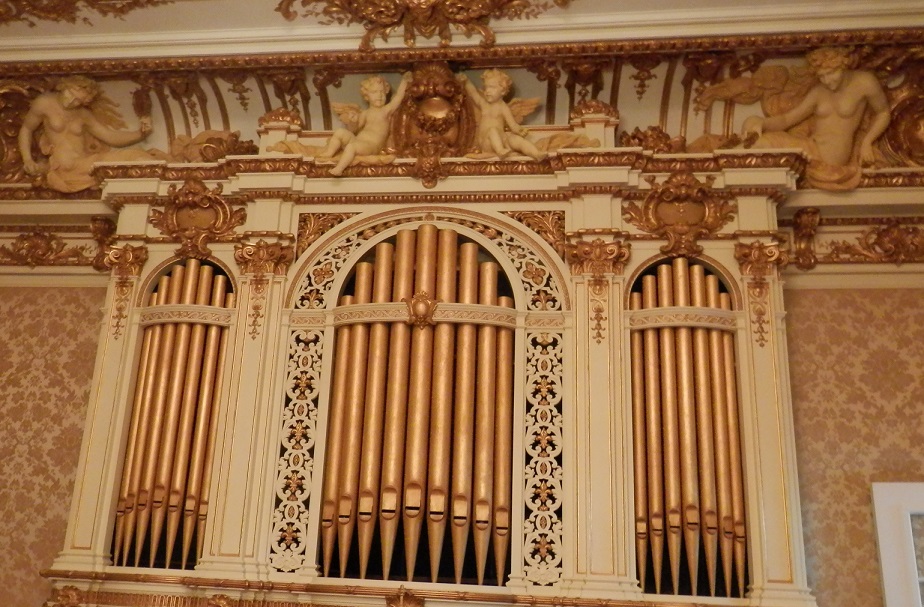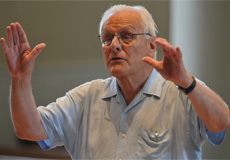ORGAN or HARPSICHORD – Solo/Duo
Organ Solo:

May God Inspire (2/14/21) for solo pipe organ – 7’00”. The vision for this piece is that we are all capable of more than we express in our everyday lives. MIDI recording.
Tribute and Memorial (11/9/21) for organ – 9’30”. This was composed to commemorate the lives of Ruth and Clarence Mader. MIDI recording.
The American Eagle (6/29/18) for pipe organ – 7’15”. As a symbol of America, the bald eagle is without peers. It is seen on the Great Seal of the United States, the President’s Seal and seals of the Departments of State, Defense, Justice, Energy, Homeland Security, Commerce, Army, Navy, Air Force, Marines, National Guard, Veterans Affairs and Human Services. It also represents the FBI, CIA, NSA and FEMA, to name just a few of many. MIDI recording.
Sarabande (4/3/17) for pipe organ – 7’00”. The work has two equal halves, each repeated. In a church service, the first half, in B minor, could be played without repeat in less than two minutes. MIDI recording.
Fanfare for St. Matthews (2012) for pipe organ – 1’15”. This short fanfare is ideal for an organ with festival brass. MIDI recording.
Waltzing Taps: Harry Comeskey’s Last Dance (2012) for pipe organ – 3’20”. This work was written on a commission from Harry A. Comesky, a retired economics professor with a great sense of humor and, what some might call, a slightly twisted sense of how his own funeral should take place. Harry has been in the military, and he loves to ice skate. So this work combines “Taps” with part of the “Skater’s Waltz” as a final tribute to his own life. As I write this in 2018, Harry is 86 years old and doing fine. He has heard this piece several times, not wanting to miss out on listening to it at his own funeral. MIDI recording.

“Celebration: The Two Williams” (2002) for organ – 7’00”. The work celebrates my father, William Daugherty, and my college mentor, William Osborne, a fine organist and choir director.
Live recording. Premiere in late February, 2003, by William Osborne in Swasey Chapel at Denison University, Granville, Ohio.
William Osborne shown here conducting the Denison Singers
Harpsichord Solo:
Stressful Times (9/25/20) for solo harpsichord or piano – 8’15”. The three movements reflect my personal reactions to the coronavirus pandemic. In some instances, these have been expected, and in others, surprising. “Pandemic Dreams” forms a narrative based on real nightmares. These dreams are stressful, and the music for them is often unrelentingly dissonant. “Quarantine Isolation” requires a calm but lonely music. The steady sixteenth-note rhythms of the opening cascade in descending thirds but rise in chordal fourths. “Return to Life” is a giddy response to renewed socialization, whether online or in person. It combines many short, sectional ideas into a cheerful hodge-podge – sentimental, rag, jazz and pop elements are all present, as if, because they have been absent (like one’s friends), they can be celebrated as new. It is a case where the familiar is cherished. MIDI recording.
Etude with Sass (2012) for harpsichord or piano – 5’15”. This piece should be played with a driving motion and a jazzy feel. Where actual slurs are not possible, the last note in the group should be somewhat shortened. MIDI recording.
Stressful Times (9/25/20) for solo harpsichord – 8’15”. The three movements reflect my personal reactions to the coronavirus pandemic. In some instances, these have been expected, and in others, surprising. “Pandemic Dreams” forms a narrative based on real nightmares. These dreams are stressful, and the music for them is often unrelentingly dissonant. “Quarantine Isolation” requires a calm but lonely music. There is rebellion in the middle section. It is much faster and chromatic, as the notes charge up and down the keyboard. Surely, one thinks, there must be a way to end the isolation. “Return to Life” is a giddy response to renewed socialization, whether online or in person. It combines many short, sectional ideas into a cheerful hodge-podge – sentimental, rag, jazz and pop elements are all present, as if, because they have been absent (like one’s friends), they can be celebrated as new. It is a case where the familiar is cherished. MIDI recording.
Heartland Preludes (2010) for harpsichord or piano – 9’30”. This work was composed honoring the place where I grew up. There are historical reasons why it was called the Heartlands, but for most residents in that part of the state, the name came to signify an attitude toward life. These were hard-working, middle class citizens who believed in being honest and helping one’s neighbors. They recognized the Heartlands as a symbol of what was good about their country. This work follows the life of one of these people, working hard to support his family. MIDI recording.